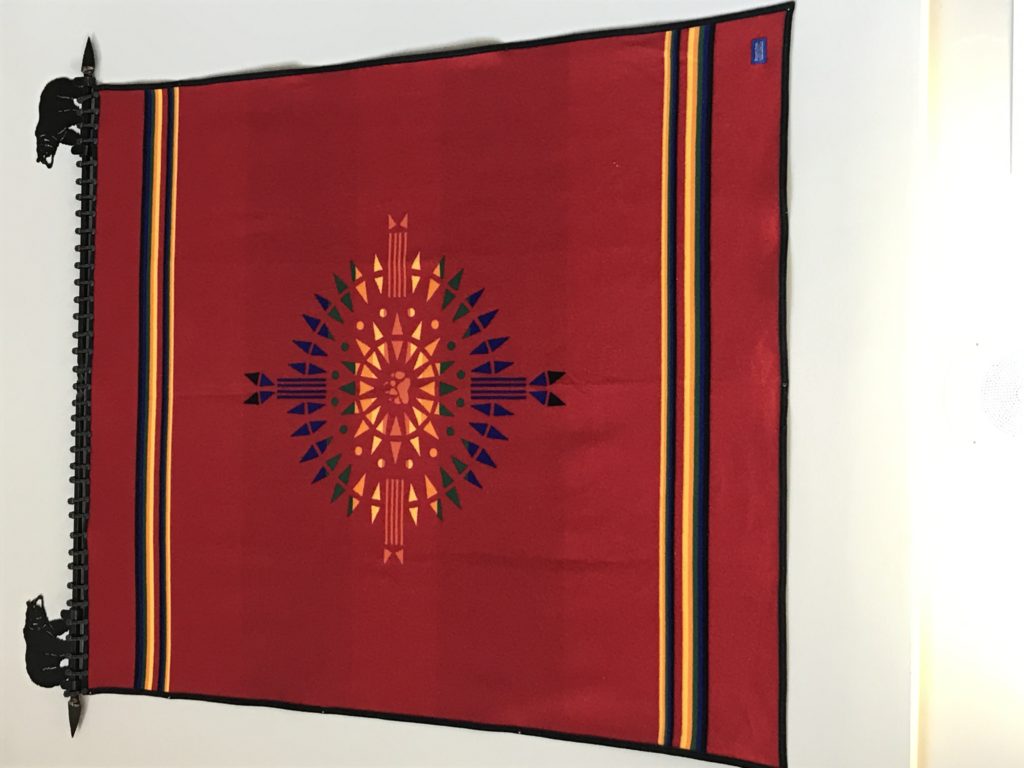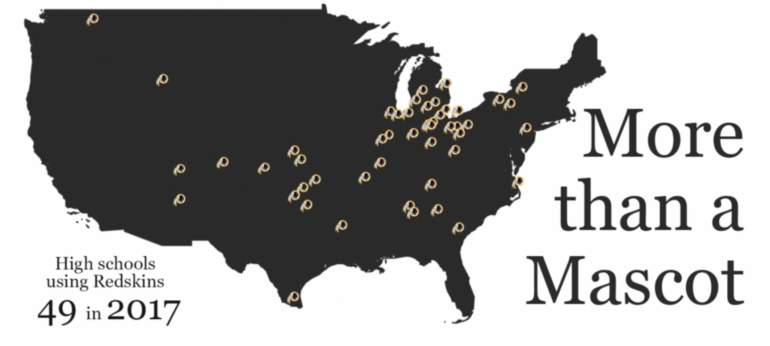COLLEGE PARK, Maryland — George Godfrey has devoted much of his life to studying and writing about the history and culture of Native Americans. So, when he was called upon to testify about the Goshen High School Redskins in 2015, he did not mince words.
“(The mascot name is), in my estimation, a derogatory name, and it invokes a lot of racism, because of the people that were against the natives in the Northeast,” Godfrey, who is Potawatomi, said he told the Goshen, Indiana, school board two years ago.
His statement made an impact. Less than a year later, the school changed to the Goshen RedHawks. At Goshen and several high schools that have changed the name in recent years, Native Americans played an important role in the debate, Capital News Service found.
- Numerous Native American groups sent letters to Red Lodge High School in Montana in support of a local movement to change the name from Redskins.
- Port Townsend High School in Washington state worked with the Jamestown S’Klallam Tribe to ensure that the school’s mascot was changed, and the tribe helped fund the transition from Redskins to Redhawks.
- Lancaster High School in New York stopped using the name in 2015 after pressure from local Native Americans, including Native American students at several rival schools that boycotted Lancaster athletic events, according to the Buffalo News.
In Goshen, the school board received occasional complaints for years regarding the name, but had to prioritize more pressing issues, Goshen High School Principal Barry Younghans said. Nonetheless, as the school discarded old athletic uniforms, they replaced them with new ones that didn’t use the controversial name, in an effort to head off any conflict in the community, Younghans said.
Then, in the summer of 2015, Godfrey — a Potawatomi who has written several books on the tribe — and representatives of the Pokagon Band of the Potawatomi — a federally recognized tribe near Goshen — pushed the issue to the forefront of the board’s priorities at meetings.
“I mentioned to the group that originally, the name ‘Redskins’ was something attributed to people because of the paint they put on their faces, but later, the name became associated with the idea of carrying red, bloody scalps and getting paid for them,” Godfrey said.
Their testimony led to public debate on the name, Younghans said. In July 2015, the board ultimately voted to change the name the school adopted nearly 90 years prior.
“(Representatives) of the Potawatomi (Tribe) came and spoke to our board, and basically said, ‘We’re not going to be political about this, but we are going to tell you that it offends our people,’” Younghans said. “That struck a chord with our administrators and our board.”
The school administration appointed a committee of students to lead the search for a new name. After a vote from students, staff and alumni in the district, they switched to RedHawks on Jan. 1, 2016.
The scene at a Goshen High School football game today has not changed much in the past two years. Goshen’s bright red uniforms still stand out in stark contrast against the green turf field, and students in the crowd still sport their letterman jackets with a large “G” on the chest, photos of games show.
“While a lot of the community wasn’t happy with the mascot change, there didn’t seem to be a lot of backlash,” said Kyrie Potter, a senior at Goshen at the time of the change who now attends Brigham Young University. “The majority of the community was able to come together and help incorporate the new mascot of the RedHawks once it was selected, as a way to show support for the school and community.”
Eight months after the name change, in August 2016, the Pokagon Band of the Potawatomi urged more schools that use the name to stop.
“The term ‘Redskins’ derives from a practice that encouraged genocide against Native Americans,” the tribal council wrote in a resolution. “Studies have demonstrated that the use of an offensive, derogatory, and demeaning term such as ‘Redskins’ as a component of a mascot, name, or symbol by schools has a detrimental effect, including negative psychological consequences, on the Native American students of such schools.”
But not all Native American groups are as strongly opposed to the name as the Potawatomi were in Goshen. Tulare Union High School in California used the mascot until a state law banned public schools from using the name after Jan. 1, 2017. Despite the law, many local Native Americans never took issue with the name.
“There was no opposition to the name. Tule River did not have any opposition to that,” Tule River Tribal Council Vice Chairman Ryan Garfield said. “We have some members of the tribe that feel they should (change the name) or they shouldn’t, along with the National Football League team’s name, so there’s no official position on it right now …. To each his own, pretty much.”
Tulare Union, which had used the name since the 1920s, now goes by Tribe.
Red Mesa High School in Arizona is located on a reservation, and nearly all of its students are Navajo, but they still use the mascot. A line on the school’s home page states that Red Mesa is “proud to be home of the Redskins.”
“The community was the one that brought the name in (and) they’re supportive of the name,” said Kim Pearce, the superintendent for Red Mesa Unified School District.
In other communities, such as Red Lodge, Montana, Native Americans played a key role in changing it.
At Red Lodge High School in 2011, pressure to change the mascot started at a local level, with Native Americans writing letters to Principal Rex Ternan and showing up at school board meetings, filling the first two rows consistently.
For Gerald Sherman, a member of the Oglala Lakota Nation, organizing the local Native American tribes to attend the meetings and send letters to the principal about the mascot caused consternation for his son, then a junior.
“What bothered (my son) was when they started the process,” said Sherman. “Some of his best friends were on the other side and he was in favor of changing it.”
The pressure grew as Sherman reached out to other groups, asking for letters of support. Attendance at school board meetings also increased.
“The principal said he had never seen school meetings so packed,” said Indian Education Specialist Mike Jetty of Montana’s Office of Public Instruction in the Division of Indian Education.
A possible catalyst for the change was Article X of Montana’s state Constitution, Jetty said, which stipulates that “every Montanan, whether Indian or non-Indian, be encouraged to learn about the distinct and unique heritage of American Indians in a culturally responsive manner.”
The school board, which included a student representative, voted unanimously to change the name. And the students at the elementary, middle and high school voted for the Rams as the new mascot in 2011.

After the students chose the Rams as their new mascot, a “star quilt” was gifted to the high school by the Montana Office of Public Instruction.
“A lot of times, Native Americans honor an individual or group, you present them with a gift. And so, you know, receiving a star quilt is a big honor…we recognized that what these students did was historic,” Jetty said.
Over the last six years, people have grown accustomed to the new name, Ternan said. That school spirit helped the Rams to an undefeated football season in 2012.
“Using a mascot everybody can get behind makes a big difference,” said Sherman.
-30-


You must be logged in to post a comment.